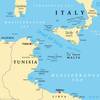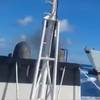Editor’s Note
Last month the Alliance of Maritime Regional Interest in Europe (AMRIE) presented a series of recommendations aimed at improving levels of oil tanker safety in response to recent Commission proposals on the safety of the seaborne oil trade. The AMRIE paper specifically calls for maritime “black boxes” to be fitted to all existing cargo ships, thus exceeding the IMO suggestion of outfitting new ships only.
While it is relatively impossible to find a shipowner/operator who would publicly denounce a sweeping safety measure in the aftermath of a highly publicized, politically and emotionally charged disaster, it is fair to say that this-bottom line conscious group will be none too pleased with the latest development, considering the anticipated price range per ship will be between $75,000 and $150,000.
Regardless of the outcome of AMRIE’s suggestion, it is clear that the safety bar — rightfully so — has been raised another notch.













